Do you have an annoying black spot appearing in the middle of your projected image? Are you worried that it could be a sign of a bigger problem with your projector? Don’t worry – we can help. In this blog post, we are going to uncover what may be causing those pesky black spots and how to fix them. From dust on the lens, to incorrect setting on the projector itself, there are several possible causes and solutions available for this common projection headache. Read on to learn all about why my projector has a black spot and find out more about troubleshooting and maximizing your projection experience.
What Projectors Types Are The Most Popular?
When it comes to projectors, there are a few types that are the most popular. The three main categories are LCD, DLP and LED projectors. Each type has specific characteristics that make them unique in their own ways. [1]
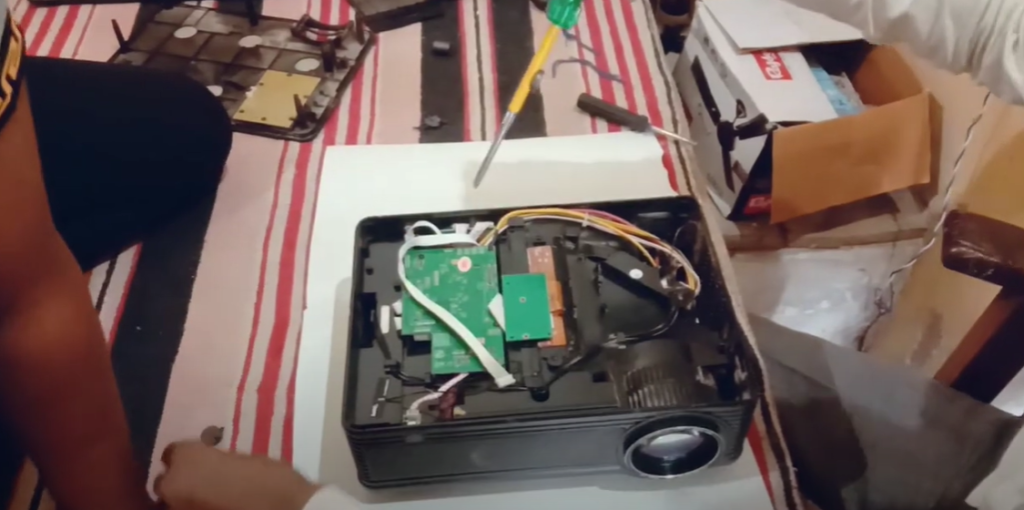
LCD Projectors
LCD (Liquid Crystal Display) projectors use a liquid crystal display panel to create an image. They typically have a higher brightness rating and a longer bulb life than other types, but they may not be as sharp or detailed in their images.
DLP Projectors
DLP works by using a spinning color wheel which reflects the light of the bulb through red, blue and green filters which are then projected onto an image device called a Digital Micromirror Device. This device is made up of thousands of tiny mirrors that reflect the light from the color wheel, creating a high-resolution image which is then projected onto the screen. The resulting picture is often sharper and more detailed than an LCD projector, but they may not have as high of a brightness rating or bulb life.
LED Projectors
LED (Light Emitting Diode) projectors use LEDs to create the image on screen. These projectors tend to be brighter than other types, with a long bulb life and excellent color accuracy. The downside is that the image can sometimes be pixelated and not as detailed as other types.
When choosing a projector, consider the purpose of the device and the environment in which it will be used. Different projector types suit different situations, so researching each type thoroughly will help ensure you get the most out of your purchase. Additionally, understanding what features are offered by each type will help you make an informed decision. [2]
What is the Working Principle of the Projector?
Projectors use a combination of optics and electronics to display an image onto a surface. The projection process starts with the projector taking a signal from an external video source, such as a DVD player or laptop computer. This signal is then passed through an optical assembly that uses lenses to magnify it and project it onto an output surface such as a wall or screen. [3]
Projectors also contain a lamp to create light, which is then directed onto the image that is projected onto the output surface. The lamp can be either an LED or an incandescent bulb and is usually rated for a specific number of hours before it needs replacing. Once the light from the lamp is directed onto the image, it is further amplified by a system of lenses and mirrors that eventually projects the image onto the output surface.
Projectors are useful tools for sharing information in classrooms, offices, home theaters, and other settings. They provide a means for large groups of people to view images or videos that would otherwise be impossible on traditional displays such as computer monitors. Additionally, they are becoming increasingly popular for use in outdoor settings such as weddings and conferences due to their portability and ease of setup. With the right projector, you can make any event much more engaging than it would otherwise be! [4]
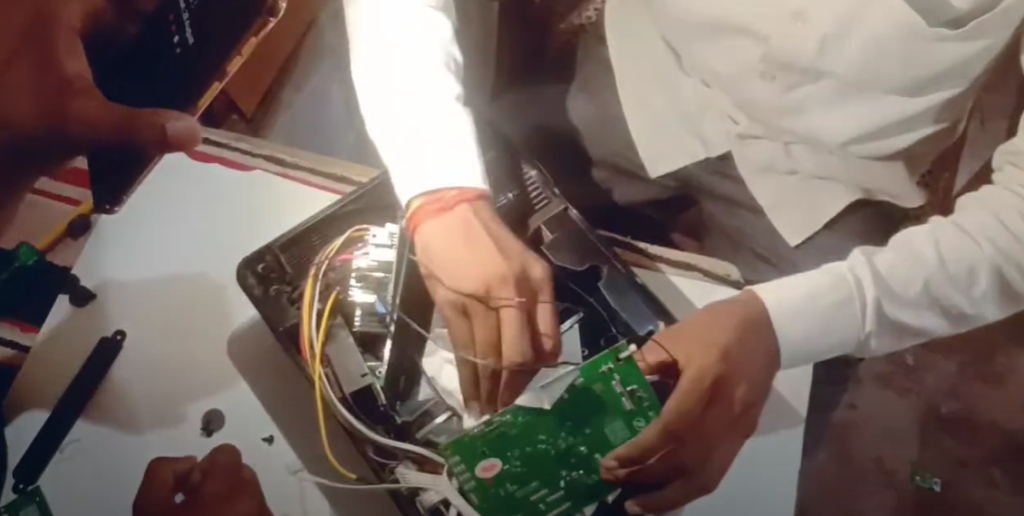
What Types of Project are the Projector Good for?
The projector is a great tool for many different types of projects, ranging from home theater to classroom presentations. In general, these are the most common applications for projectors:
Home Theater
This is perfect for those who want to watch movies and TV shows on the big screen in their living room or backyard. The projector can also be used to view photos or videos from a laptop, tablet, or smartphone. [5]
Parties and Events
Projectors are great for large gatherings, such as birthday parties or corporate events. They can be used to show movies, slideshows, presentations, and much more. Plus, their portability makes them an ideal choice for spaces with limited space.
Classroom Presentations
For educators, the projector is a great tool for delivering lectures in an engaging way. It can be used to show images, slideshows, and videos that capture student attention.
Gaming
For gamers, the projector offers a unique gaming experience unlike any other. With large projection screens, players can immerse themselves in their favorite games without worrying about limited space or lugging heavy equipment.
Business Meetings
For business professionals, the projector is a great way to deliver presentations in a more engaging manner. It can be used for PowerPoint presentations, slide shows, or videos and help create a memorable experience for attendees.
Outdoor Events
Projectors are also great for outdoor events. They can be used to show movies, videos, and presentations at night or in brightly lit places like parks or beaches. The projector’s portability makes it an ideal choice for any type of event. [6]
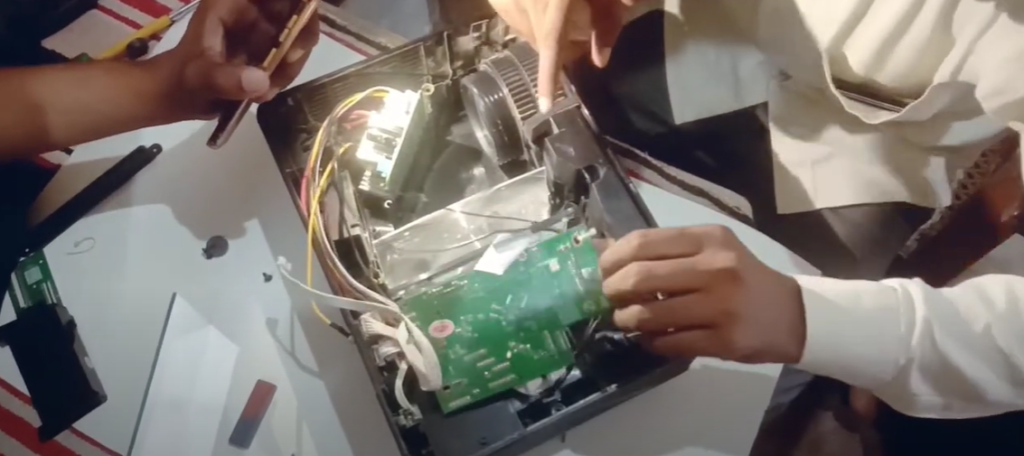
What are the Projector’s Main Functions?
Projectors are becoming increasingly popular due to their ability to produce large images in a variety of settings. A projector can be used for presentations, movies, sports events, and many other applications. To understand what a projector is capable of doing, it’s important to know the main functions that make up its functionality. [7]
They include:
- Brightness – A projector has the ability to produce an image that is much brighter than a standard television screen. This means it can be used in bright rooms, or outdoors, without losing any of its picture quality.
- Resolution – The resolution of a projector determines the level of detail that can be displayed on its screen. High-resolution projectors will produce a sharper image with a lot more clarity.
- Contrast Ratio – The contrast ratio of a projector is the difference between the brightest and darkest colors it can display. A higher contrast ratio means that the projected image will be richer in color and have a greater depth of field.
- Portability – Many modern projectors are designed to be small and lightweight, making them easy to transport and set up for presentations or movies.
- Display Technology – Projectors use a variety of display technologies such as LCD, DLP or LCoS (Liquid Crystal on Silicon) to generate their images. Each technology has its own benefits, so it’s important to consider which one is best suited for the application you need.
- Full HD Resolution – The projector offers full HD resolution, allowing for sharp, detailed visuals whether you’re displaying photos, videos, or other images. This makes it perfect for presentations and multimedia displays that require clear visuals.
- Professional Quality – With its professional-grade hardware and construction, the projector is capable of producing smooth, high quality images at all times. This allows users to create stunning presentations with vibrant colors and intricate details without worrying about image quality.
- Easy to Use – The projector is intuitive and easy to use, making it ideal for users of all skill levels. With its simple, user-friendly interface, you can quickly set up the projector for any kind of project without needing additional technical skills or knowledge.
These are the main functions of a projector and understanding how they work is key to getting the most out of your device. It’s also worth remembering that various projectors will have different levels of performance, so make sure to research all your options before making a purchase. [8]
How to Set Up the Projector?
To set up a projector, you’ll need to connect the right cables and adjust a few settings in order for your images to appear correctly. Here’s an easy-to-follow guide to help you get started:
- First, you’ll need to connect the projector to power and your device (e.g. laptop or phone) with the right cables. This will depend on which ports are available on your device and your projector – check the manufacturer instructions for more information. [9]
- Once the cables are connected, turn on the projector and adjust the settings for the type of device you’re connecting. For example, if you’re connecting a laptop to the projector, select ‘Computer’ as your source input.
- If the image projected on the screen isn’t clear or is too dark or light, make sure to adjust both your projector and computer settings accordingly. Additionally, ensure that any ambient lighting (e.g. overhead lights) is turned off, as this can impact the quality of your image.
- Adjust the size and position of your projected image using the zoom and focus settings on your projector to ensure that it fills up the entire screen or projection area. [10]
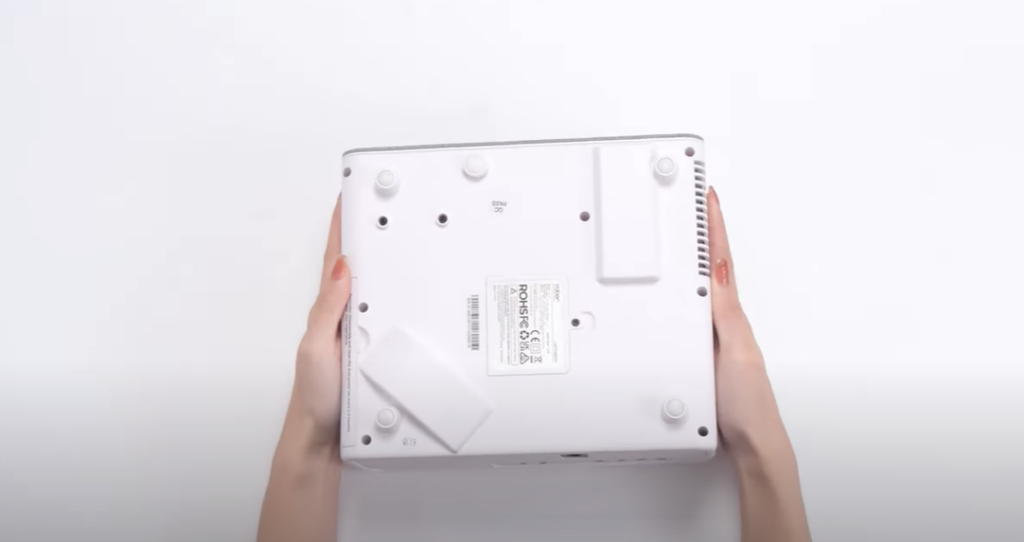
How to Keep the Projector Running Smoothly?
Whether you use a projector for business presentations, movie nights, or to watch sports games with your friends at home, it’s important to keep the unit running smoothly. To ensure that your projector is in good shape, here are some basic maintenance tips you can follow:
- Clean the lens regularly – dust and dirt on the lens can interfere with image quality and cause the projector to overheat. Use a soft cloth or lens cleaning solution specifically made for projectors, rather than any basic household cleaners.
- Check the filters – dust and debris can clog up the vents on your projector, blocking airflow which can cause it to overheat. It’s a good idea to check and clean all of the fans in your unit every few weeks.
- Keep the projector cool – use a fan or air conditioner to keep the temperature of your room consistent, and avoid leaving the projector on for longer than necessary. If possible, try to power down the unit during long periods of inactivity.
- Don’t forget about software updates – if your projector has its own operating system, make sure to keep it updated with the latest software. Doing so will ensure that your projector runs smoothly and efficiently. [11]
What Problems Can Occur with the Projector?
Although the projector can be a great tool for many applications, there can sometimes be problems that need to be addressed. Some of the most common issues that can arise include:
- Bulb Burnout: Over time and with frequent use, the bulbs used in projectors can burn out. This is especially true if you are using your projector for extended periods or in a very hot and poorly ventilated space. It is important to check your bulb frequently, as it can take time for the burnout to occur.
- Poor Projection Quality: Another issue that can occur with projectors is poor projection quality. This can be caused by a variety of factors, such as incorrect settings or an inadequate amount of light being used. To ensure the best projection quality, it is important to make sure that all settings are adjusted correctly and that you have enough light for the projector to work with efficiently.
- Overheating: Projectors can also become overheated if they are used for extended periods of time in a hot environment. Overheating can cause the projector to shut down and can even cause permanent damage. To avoid this, it is important to make sure you have adequate ventilation and that you are not running the projector for too long.
- Screen Glare: If you are using a projector in an area with too much light, it can be difficult to get the screen to display properly. The bright light sources can cause glare on the projection surface, which can make viewing difficult. To avoid this issue, it is important to adjust the room lighting and make sure that all sources of light are turned off or dimmed.
- Compatibility Issues: Finally, if you are using a projector with different types of devices or hardware, it is important to make sure that the equipment is compatible. Not all projectors are designed to work with all types of devices, and compatibility issues can lead to poor performance or even complete failure. To ensure proper compatibility, it is important to check the specifications carefully before purchasing any equipment. [12]
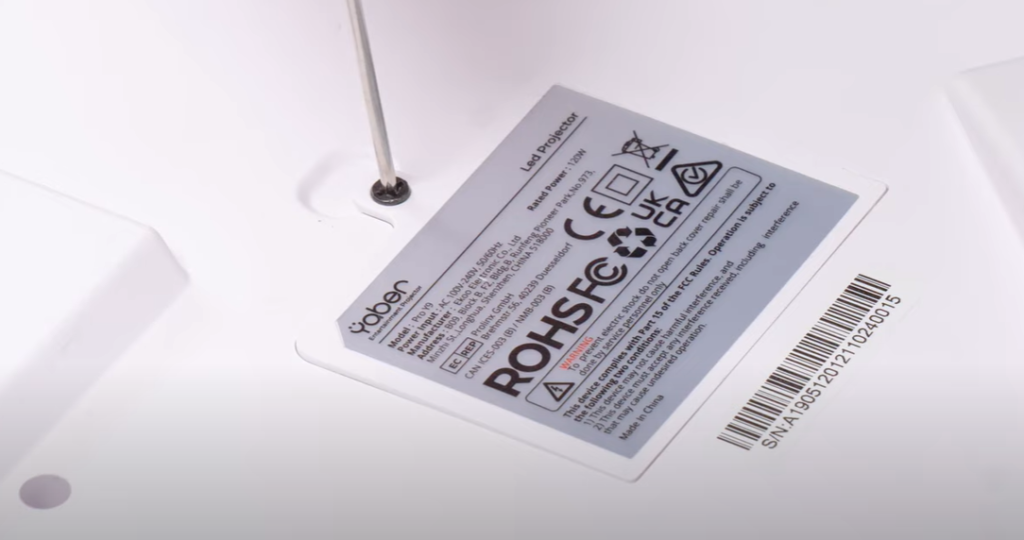
Dark Spots on Projector Images: Causes and Solutions
Most people have encountered dark spots on the image from their projector at least once in their lives. They can be distracting and challenging to deal with, but understanding the cause of these spots and how to remove them is key in getting the best viewing experience.
Key Causes
- Malfunctioning Lamp: The lamp is a highly sensitive component of the projector and can cause dark spots on the image if it isn’t functioning properly. This can happen from an old bulb, or even a faulty connection in the circuitry. Replacing the lamp is usually the quickest solution to this problem.
- Dust Accumulation: Particles like dust build up over time and can cause dark spots on the image. Vacuuming or blowing out your projector is often enough to get rid of them.
- Internal Component Malfunction: Damaged internal parts like circuit boards or wiring can also cause dark spots on images. In this case, it’s best to contact a certified technician that specializes in projector repair to resolve the issue.
Solutions for Dark Spots
- Replace the Lamp: As mentioned earlier, a malfunctioning lamp is usually the cause of dark spots and can be solved by replacing it with a new one.
- Clean Out Your Projector: If the issue is caused by dust or debris build up, cleaning out your projector should do the trick. Vacuum or blow out any materials that are stuck in the device to get rid of the spots.
- Seek Professional Help: If you suspect an internal issue is causing the dark spots, it’s best to seek help from a professional. They will be able to diagnose and resolve the issue quickly and safely. [13]
Tips for Projector Maintenance
Taking care of your projector is essential for ensuring optimal performance over time. Here are a few simple tips to keep in mind when it comes to maintenance:
- Always handle your projector with care, especially when moving it around or transporting it from one place to another. Be sure to use the appropriate packaging materials and secure the projector during transportation.
- Make sure to keep your projector away from direct sunlight and other sources of heat or moisture. This will help prevent damage to internal components and ensure it works properly.
- Check the bulbs regularly for signs of wear and tear to make sure they are still functioning properly. Be sure to replace worn bulbs with an exact match recommended by the manufacturer.
- Ensure that the projector is placed on a level, stable surface to reduce potential damage. This will also help reduce vibrations and improve projection quality.
- Remember to keep all power cords away from the projector to reduce any potential risk of fire or electrical shock.
- Have your projector serviced regularly to ensure optimal performance and longevity. Professional technicians can check for signs of wear and tear, as well as perform any necessary repairs or replacements. [14]
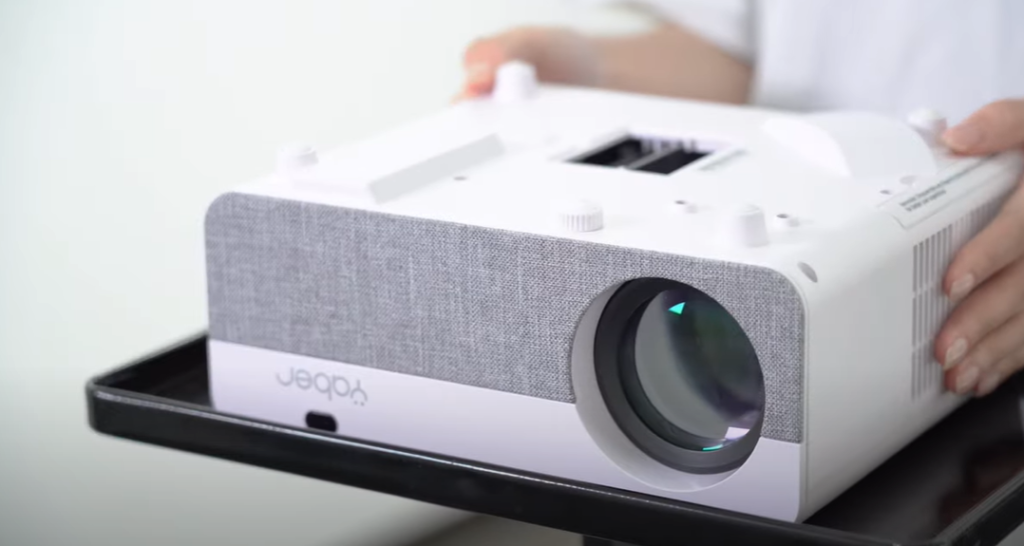
FAQs
Why is there a shadow on my projector?
Projector shadows are a common problem that can be caused by several factors. It could be due to the dust or dirt on the projector lens, the age of your projector, or even an issue with the lamp inside. If you have been using your projector for long periods of time without proper cleaning and maintenance, it’s likely that dust has built up on the lens and caused an optical distortion in the image. You might also want to check your projector settings, as some projectors will automatically adjust the brightness or contrast if it detects a shadow on the screen. If all else fails, you may need to replace the lamp inside your projector since this is often the cause of shadows appearing on the projected image.
Why is my projector showing black?
A black spot on your projector can be caused by a few things. One common reason is because the lamp has reached end of life (EOL) and needs to be replaced. Other causes could include incorrect alignment or image settings, overheating, dust accumulation in the lens, or a defective part inside the projector.
If you’ve noticed that your projector isn’t displaying an image as clearly or brightly as it used to, it may be due to a problem with the lamp. Projector lamps typically have an average lifespan of around 4,000-5,000 hours; however, make sure you refer to your particular model’s specs for more specific information. If the usage time on your lamp is close to this number, it’s likely time for a replacement.
Another common cause of black spots is an incorrect alignment or image settings. These can be adjusted in the projector menu system, but if you are unfamiliar with these options it would be best to seek help from a professional technician.
Finally, overheating and dust accumulation can also lead to dark patches appearing on your image. If the projector is in a very dusty environment, it’s important to clean or replace the filter periodically. Additionally, make sure that there is enough space around the projector for adequate airflow. This will help to reduce the risk of overheating and should keep your projector running optimally for longer.
Do projectors have burn in?
Yes, projectors can be subject to burn in. This occurs when the same image is displayed on the projector’s screen for an extended period of time. As a consequence, this image will become permanently etched onto the display’s surface. It is crucial to note that burn-in does not affect all projectors and it can be avoided by using different images at regular intervals. Additionally, some manufacturers have created technologies that help reduce the risk of burn in.

How do I fix a dark spot on my projector?
Typically, the main cause of a black spot appearing on your projector is due to dust or dirt getting trapped inside the lens. To fix this issue, you’ll want to clean the lens to remove any built-up debris that may be causing the dark spot.
To do this, unplug your projector before carefully removing the lens cover. Make sure you don’t touch the lens as this may cause further damage. Once the lens is exposed, use a blower to remove any dust or dirt on the inside of the lens and around its edges. Ensure that there are no particles remaining on the lens before putting it back in place and plugging in your projector again.
If after cleaning, you still notice a black spot on the image, it may be caused by a separate issue. This could be due to wear and tear or an internal problem that requires professional attention. It’s best to have your projector serviced if you believe there might be an internal fault.
Remember, it’s important to keep your projector clean as dust and dirt build-up can cause dark spots over time. Regularly check and clean the lens to ensure optimal performance and a clear image.
Useful Video: Projector black spot problem solution/ projector screen problem/ Dust black spot
Summing Up
After reviewing the possible causes of black spots appearing on a projector, it is clear that these frustrating little distractions can have a variety of sources. From problems with the hardware components to bad connections and more, almost anything can cause a black spot. Fortunately, by doing some research and using our steps above you should be able to determine what caused the issue in your own projector. By understanding exactly why this problem has occurred, the problem can be addressed and your projector cleared of those nasty dark blotches. To ensure your experience with your projector remains pleasant and uninterrupted in the future, be sure to regularly maintain its bulbs as well as all its other components. Good luck!
References:
- https://www.moglix.com/articles/types-of-projectors-based-on-their-applications
- https://www.theverge.com/21453070/best-projector-home-theater
- https://www.utmel.com/blog/categories/equipment/what-is-a-projector
- https://hitech-us.com/articles/how-do-projectors-work
- https://www.projectorcentral.com/projectors-101.cfm
- https://electricalfundablog.com/projector-types-works/
- https://www.computerhope.com/jargon/p/projecto.htm
- https://www.essaysusa.com/article/the-uses-and-functions-of-the-projector
- https://www.cnet.com/tech/home-entertainment/9-tips-to-perfectly-set-up-your-projector/
- https://www.wired.com/story/how-to-buy-a-projector/
- https://ivankyo.com/blogs/tech/how-to-fix-projector-lag-issues
- https://pointerclicker.com/projector-display-problems/
- https://pointerclicker.com/dark-spot-on-projector-image/
- https://cyberschooltech.co.ug/taking-care-of-your-projector/

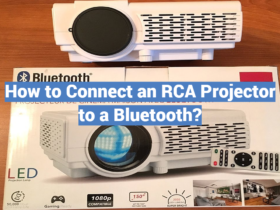


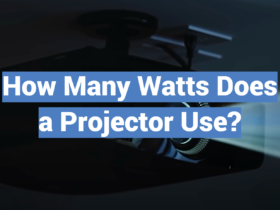
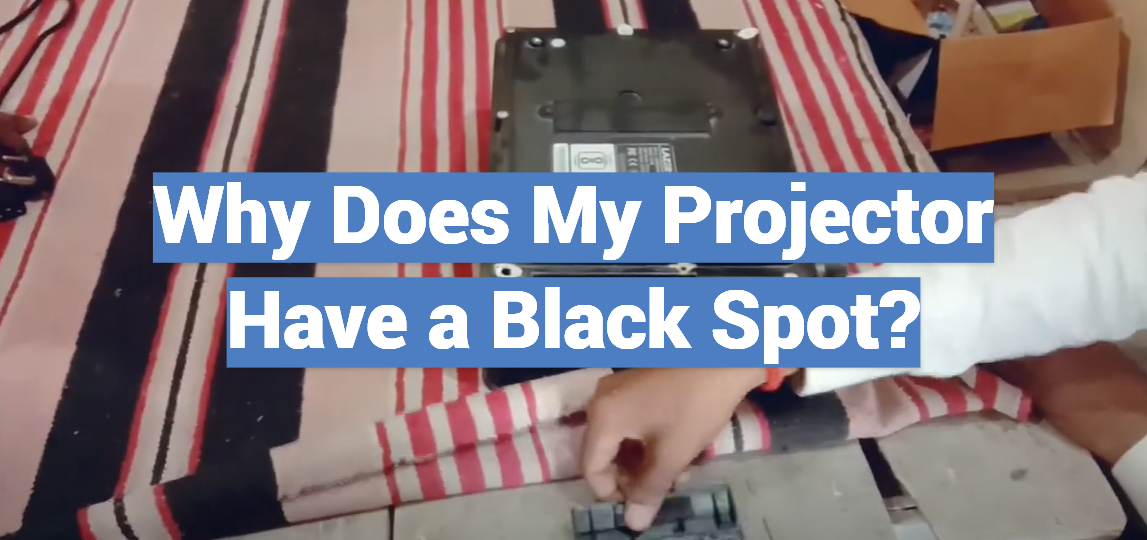

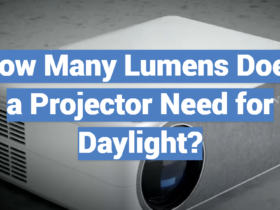

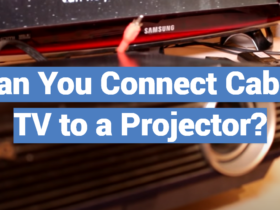
Leave a Review